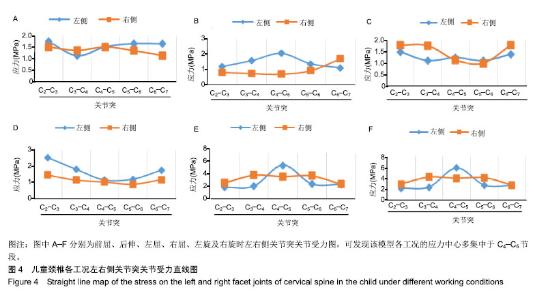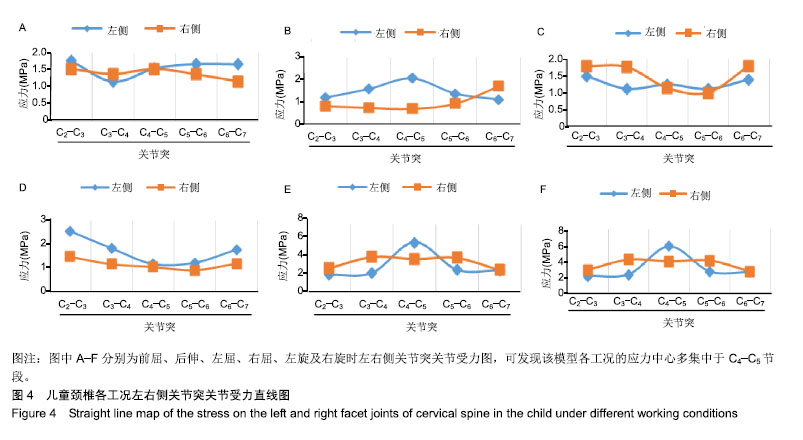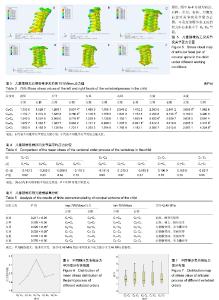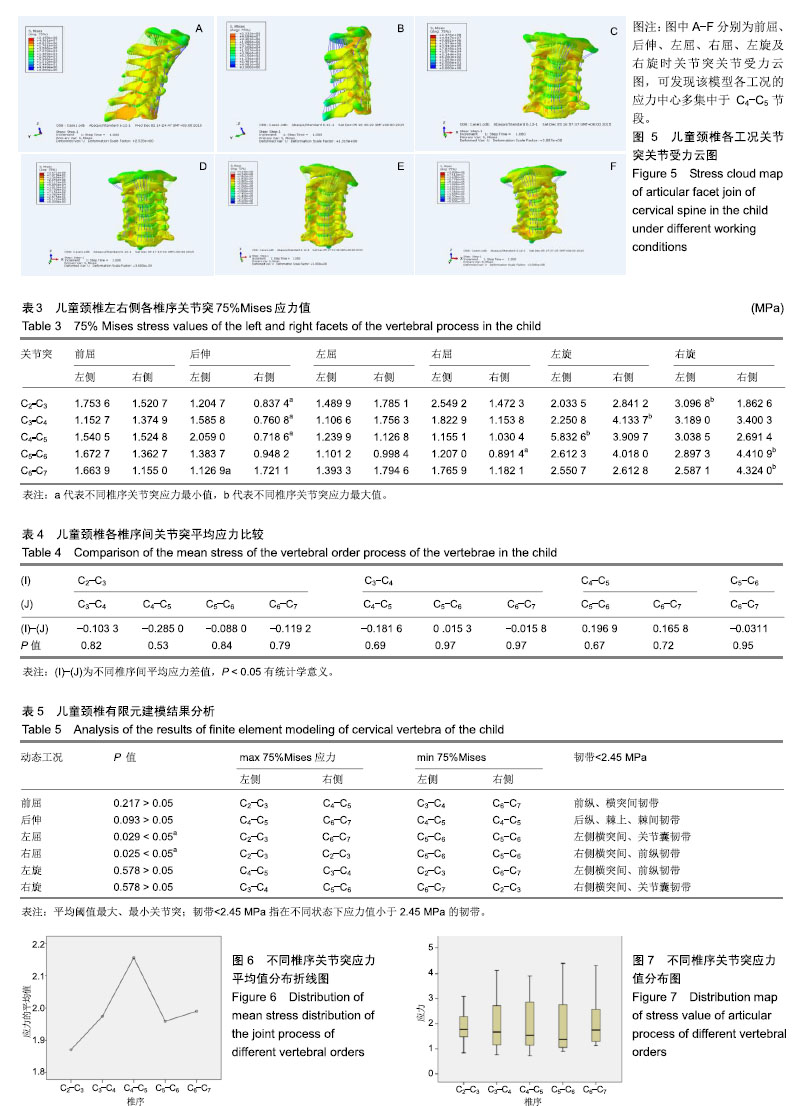| [1]Menezes AH.Craniocervical developmental anatomy and its implications. Childs Nerv Syst. 2008;24(10):1109-1122. [2]杨明浩,高文雷,金乾坤,等.颅颈交界区畸形寰枢外侧关节生物力学稳定性的有限元分析[J].重庆医学,2015,44(2-9):4070-4073.[3]张少杰,王星,李志军,等.应用数字化技术对儿童寰枢椎椎弓根形态及其置钉方式的初步探讨[J].中华小儿外科杂志, 2015,36(5): 373-377. [4]Adib O, Berthier E, Loisel D, et al. Pediatric cervical spine in emergency:Radiographic features of normal anatomy,variants and pitfalls. Skeletal Radiol. 2016;45(12):1607-1617. [5]Wiseman DB, Bellabarba C, Mirza SK, et al. Anterior versus posterior surgical treatment for raumatic cervical spine dislocation.Curr Opin Orthop. 2003;14(4):174-181.[6]Denis F. The three column spine and its significance in the classification of acute thoracolumbar spinal njuries .Spine.1983; 8(8):817-831.[7]Gellhorn AC, Katz JN, Suri P. Osteoarthritis of the spine: the facet joints.Nat Rev Rheumatol. 2013;9(4):216-224.[8]Suri P,Miyakoshi A, Hunter DJ, et al. Does lumbar spinal degeneration begin with the anterior structures? A study of the observed epidemiology in a community-based population. BMC Musculoskelet Disord.2011;12:202. doi:10.1186/1471-2474-12-202.[9]冯会梅,王星,李志军,等.有限元法分析0-6岁儿童枕寰枢复合体发育及其生物力学的变化特征[J].中国组织工程研究, 2018,22(23): 3710-3715.[10]Takigawa T, Espinoza OA, An HS, et al. Spinal kinematics and facet load transmission after total disc eplacement. Spine (Phi?la Pa 1976). 2010; 35(22):E1160?1166.[11]Varlotta GP, Lefkowitz TR, Schweitzer M, et al. The lumbar facet joint: a review of current knowledge: part 1: anatomy, biomechan?ics, and grading. Skeletal Radiol.2011;40(1):13?23.[12]Kalichman L, Hunter DJ. Lumbar facet joint osteoarthritis: a re?view. Semin Arthritis heum.2007;37(2):69?80.[13]Morota N. Pediatric Craniovertebral Junction Surgery.Neurol Med Chir (Tokyo). 2017;57(9):435-460.[14]袁元杏,万磊,尹庆水等. 中国数字人CT数据颈椎运动节段有限元模型的建立[J]. 中国组织工程研究,2011,15(26):4915-4918.[15]胡晓辉,洪翔,何冰凡,等.基于Simpaleware全颈椎三维有限元模型的构建与分析[J].医用生物力学,2014,29(6):530-535.[16]张建国,王芳,薛强,等.后碰撞中人体颈部动力学响应的有限元分析[J].工程力学,2010,27(4):208-211.[17]Ebraheim NA.An anatomic study of the thickness of the occipital bone.Implications for occipitocervical instrumentation.Spine . 1996;21(15):1725-1729.[18]石关桐,孙波,肖翔,等.颈椎关节突关节压力变化的生物力学实验研究[J].中国中医骨伤科杂志,2000, 8(5):1-4.[19]Mullett JH,McCarthy P.Occipital fixation:effect of inner occipital protuberance alignment on screw position.J Spinal Disord. 2001; 14(6):504-506.[20]King NK,Rajendra T,Ng WH.Acomputed tomography morphometric study of occipital bone and C2 pedicle anatomy for occipital cervical fusion.J Surg Neurol Int. 2014;5(7):380-383.[21]Puttlitz CM,Goel VK,Traynelis VC,Clark CR.Afinite element investigation of uppercervical instrumentation.Spine. 2001;26(22): 2449-2455.[22]廖穗祥.新型枕颈内固定系统的研制?生物力学分析及初步临床研究[D].广州:南方医科大学,2017.[23]Adib O, Berthier E, Loisel D, et al.Pediatric cervical spine in emergency: radiographic features of normal anatomy,variants and pitfalls.Skeletal Radiol.2016;45(12):1607-1617.[24]覃朝锋,彭国强,罗帝林,等.儿童颅骨后天畸形的病因及影像学表现[J].医学影像学杂志.2013,23(5):810-812. [25]张跃辉,邵将,宋佳,等.椎弓根螺钉技术在学龄前儿童寰枢椎脱位治疗中的应用[J].脊柱外科杂志,2016,14(4):211-215.[26]李浩,李承鑫,张学军,等.3D打印模型辅助后路内固定治疗儿童颈椎畸形[J].临床小儿外科杂志,2016,15(1):57-59.[27]Easter JS, Barkin R, Rosen CL, et al.Cervical spine injuries in children, part II: management and special considerations.J Emerg Med. 2011;41(3):252-256.[28]Luck JF. The biomechanics of the perinatal, neonatal and pediatric cervical spine: investigation.PhD thesis, DukeUniversity, Durham, 2012.[29]Luck JF, Nightingale RW, Loyd AM, et al.Tensile mechanical properties of the perinatal and pediatric PMHS osteoligamentous cervical spine.Stapp Car Crash J. 2008;52:107-134.[30]Kasai T, Ikata T, Katoh S, et al.Growth of the cervical spine with special reference to its lordosis and mobility.Spine (Phila Pa 1976). 1996;21(18):2067-2073.[31]Fesmire FM, Luten RC.The pediatric cervical spine: developmental anatomy and clinical aspects.J Emerg Med. 1989;7(2):133-142.[32]McCall T, Fassett D, Brockmeyer D.Cervical spine trauma in children: a review.Neurosurg Focus. 2006;20(2):E5.[33]Kallemeyn N, Gandhi A, Kode S, et al.Validation of a C2-C7 cervical spine finite element model using specimen-specific flexibility data.Med Eng Phys. 2010;32(5):482-489.[34]Panzer MB, Cronin DS.C4-C5 segment finite element model development, validation, and load-sharing investigation.J Biomech. 2009;42(4):480-490.[35]Zhang QH, Teo EC, Ng HW.Development and validation of a CO-C7 FE complex for biomechanical study.J Biomech Eng. 2005;127(5):729-735.[36]Kumaresan S, Yoganandan N, Pintar FA, et al.Biomechanical study of pediatric human cervical spine: a finite element approach.J Biomech Eng. 2000;122(1):60-71.[37]Mizuno K, Iwata K, Deguchi T, et al.Development of a three-year- old child FE model.Traffic Inj Prev. 2005;6(4):361-371. |



